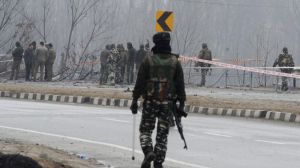Good Nukes from the Subcontinent
REMEMBER not too long ago when the subcontinent was widely described as a nuclear flashpoint? It was conventional wisdom then that the subco...

REMEMBER not too long ago when the subcontinent was widely described as a nuclear flashpoint? It was conventional wisdom then that the subcontinent was the place where nuclear weapons were most likely to be used.
It is not that the conventional wisdom did not have any basis. The long history of antagonism between India and Pakistan, heightened tensions between the two nations over Kashmir since the late 1980s, Pakistan’s proxy war of terrorism against India, the acceleration of nuclear and missile programmes, and the repeated military crises since the mid-1980s and the war in Kargil in 1999 were enough to convince most chancelleries of the world that nuclear use was imminent in the region.
Yet, India and Pakistan have managed to avert all but one of their military confrontations over the last two decades. Even the Kargil war was limited to one theatre. Two American academics, Sumit Ganguly and Devin Hagerty, ask the important question, how come the conventional wisdom was so wrong?
This is an important question, both from the academic perspectives on nuclear weapons and the history of relations between India and Pakistan. The authors are right to claim that this is the first comprehensive assessment of the six major crises that rocked South Asia as it moved towards nuclearisation and came to terms with the new realities.
There have been many analyses, some substantive and some preliminary, of these six crises: the 1984 fears of Pakistan that India was about to pre-emptively attack its nuclear facilities, the Brasstacks crisis of 1986-87, the May 1990 crisis, the nuclear tests of May 1998, the Kargil war of 1999, and the military confrontation after the December 13, 2001, attack on the Parliament.
Ganguly and Hagerty deserve credit for not only for asking the right questions but also for providing insights into all these crises and drawing lessons from them. They successfully combine their grounding in the theories of international relations as well as nuclear deterrence with the analysis of ground level dynamics of Indo-Pak crises.
They conclude that nuclear deterrence ‘‘best explains the absence of major war in the region over the last twenty years’’ and also underline that ‘‘US crisis management occasionally played a secondary role’’.
 The assessment that nuclear deterrence has worked in South Asia disproves the longstanding wisdom that the situation in the subcontinent does not lend itself to traditional notions of nuclear deterrence and that the region will be forever plagued by the ‘‘stability-instability’’ paradox.
The assessment that nuclear deterrence has worked in South Asia disproves the longstanding wisdom that the situation in the subcontinent does not lend itself to traditional notions of nuclear deterrence and that the region will be forever plagued by the ‘‘stability-instability’’ paradox.
When India and Pakistan tested nuclear weapons in May 1998, much of the outside world as well as proponents of peace in the region predicted a relentless arms race and a permanent confrontation between the two nations leading to the ruin of the subcontinent.
Yet there was a minority view within India that argued that nuclear weapons could ultimately lead to greater military stability between the two nations, freeze the territorial status quo and open the door for reconciliation.
The acceleration of the peace process in the last year and a half and the latest declaration by Prime Minister Manmohan Singh and President Pervez Musharraf in April that the Indo-Pak peace process has become ‘‘irreversible’’ has demonstrated that the ‘‘informed pessimism’’ on South Asia was so fundamentally wrong.
South Asian instability since the mid-1980s can be attributed to the process of ‘‘learning’’ the new nuclear rules by the decision-makers in New Delhi and Islamabad. It also tells us a lot about one unique condition that defined the nuclear game in the subcontinent.
Once it acquired nuclear weapons, Pakistan did not follow the traditional rules of nuclear deterrence against India. It believed that nuclear parity had opened the doors for the pursuit of terrorism against India and emboldened it to attempt a change in the territorial status quo.
Once Kargil war proved that the international system will intervene to restore the territorial status quo and after September 11, 2001, pressed Pakistan to abandon terrorism and embark on a different domestic and external orientation, the structural condition of Indo-Pak relations changed fundamentally.
To understand that process more clearly we will have to wait the next book from Ganguly and Hagerty, who hopefully will explain with equal clarity the emergence of the current unprecedented optimism about the future of Indo-Pak relations.
For now, Fearful Symmetry is a must on the shelves of all those interested in the nuclear politics of the subcontinent and the evolution of Indo-Pak relations.
Photos





- 01
- 02
- 03
- 04
- 05


























